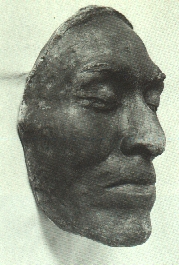The HBO movie
The Last of His Tribe ends with anthropologist Alfred Kroeber having learned a lesson in humanity from Ishi. This description by
Chris Watson sums up the change in character:
Kroeber was in Europe when Ishi died. On March 24, 1916, Kroeber sent a letter to E. W. Gifford to try to stop any autopsy in respect to Ishi's wishes. As Kroeber put it, “Science can go to hell. We propose to stand by our friends.” (Heizer and T. Kroeber: 240). Contrast this with the content of the earlier telegram to Sapir, and it seems Kroeber's attitude has changed. It was too late. An autopsy was performed, and Ishi's brain was removed before his body was cremated.
After Ishi's death, Kroeber went into psychoanalysis for two years before returning to his work. I believe he was doing some serious soul-searching about the ethics of his work. Even though he went on to become the first great California anthropologist, he never in his lifetime published another word about Ishi, and when he spoke of him it was “with feelings of deep loss” (Riffe and Roberts).The Last of His Tribe shows Kroeber reacting in horror to Indian skulls stored in a drawer in a NY museum. Actually, he was in Europe at the time, but never mind. The movie implies he wouldn't let that fate befall Ishi.
Well, not quite. Kroeber may have been appalled by Ishi's autopsy, but he wasn't
that appalled. As
Nancy Rockafellar's report concluded:
We have not been able to discover who authorized the removal of the brain at autopsy, but it seems to have been for anthropological reasons, since the usual medical protocols (esp. microscopic analysis) were omitted. It is not known what happened to the brain between the time of its removal in March 1916 and autumn 1916, when Kroeber returned from his sabbatical, wrote to the Smithsonian and shipped the brain to Washington.
The documentary record clearly shows [appendix H] the brain was sent to the Smithsonian from the University of California by Alfred Kroeber in early 1917, for scientific purposes.Andy Evangelista summarizes more of Rockafellar's findings:
"The inconsistency of cremating Ishi's remains and some of his belongings without the brain, in the face of their knowledge of his beliefs, reveals an odd rationale on the part of Pope, Gifford, Waterman, and Kroeber [the scientists who cared for Ishi]. As Gifford wrote at the time, they were truly attempting a 'compromise between science and sentiment,'" Rockafellar wrote.
"The lesson here is not merely an indictment of anthropologists and physicians of the past, but a harsh reminder of the destructive power of hubris," reported Rockafellar. "All participants in academic life must recall the historical context of individuals like Pope, Kroeber, and Waterman--and remember that the source of their conviction that they were 'doing the right thing' was the scientific certainty of the day."
"This may be one of the most egregious cases of violating a Native American," Rockafellar last month told U.S. News and World Report. "He was a real friend to the white man. He spent virtually all his waking hours telling us about his culture and he was anxious to return to the land of the dead when he passed away."Fortunately, that isn't the end of the story either. As
Evangelista writes:
The Butte County Native American Cultural Committee began an effort in 1997 to locate and place Ishi’s remains and spirit in his native homeland. According to Ishi's belief, a person could not find the land of death until all his parts were together. Everyone knew his ashes rested in a Colma cemetery, but the circumstances surrounding the removal of his brain--and its whereabouts--were a mystery. The attempts of the Native American group prompted UCSF Vice Chancellor Dorothy Bainton to commission an investigation by UCSF pathologist Walter Finkbeiner and research historian Rockafellar. With the assistance of Duke anthropologist Orin Starn, they finally located Ishi's brain at the Smithsonian in January of 1999.
A report by Rockafellar the following month set in motion a repatriation process mandated by the Native American Grave Protection and Repatriation Act, which requires federally funded institutions to return Native American remains in their possession to the individual's lineal descendants or cultural affiliates. After an often frustrating year and a half, which included red tape delays and pressure from California legislators, the Smithsonian finally turned over the brain to California Indians.I believe Ishi was reburied on August 10, 2000, at an undisclosed location in Mount Lassen National Park. His funeral was attended by the Pit River tribes, his closest living relatives.
In fairness to
The Last of His Tribe, I'm not sure anyone knew the full story of Ishi's brain in 1992. But if the movie's creators didn't know, they sure guessed wrong about Kroeber's role in shipping the brain to a museum. Oops.
For more on the subject, see
The Best Indian Movies.



No comments:
Post a Comment